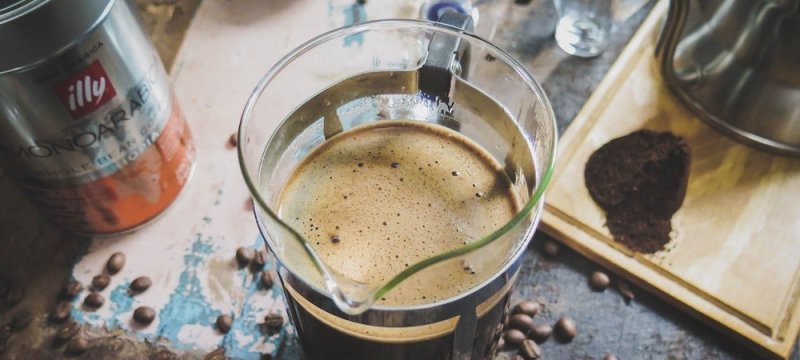That morning cup of coffee is one of the most important drinks of day, so you’ll want to make it as high quality as possible. Unfortunately, standard coffee makers don’t always do the trick, and many people are turning to a tool that’s been around since 1929 — the French press.
While some coffee makers cost upwards of $11,000, most French presses are a fraction of the cost, with many models costing less than $100. If you’re looking at getting a French press yourself, you need to know what exactly it is, how it works and whether it’s all that it’s cracked up to be.
What Is A French Press?

The French press has many different names around the world, including the coffee press, press pot, cafetiere, cafetiere a piston and Bodum, a brand that’s often associated with French press.
The French press combines a beaker with a filter press and is essentially a “coffee plunger.” Coffee is placed in the beaker, topped with boiling water and, after allowing it to steep, the plunger is pushed downwards to filter any rough particles out of the coffee. Along with producing quality coffee, French presses are easy to use, which contributes to their popularity.
How To Use A French Press

The French press is fairly intuitive to use and takes only a few moments to figure it out for the first time:
- You’ll need grounded coffee beans. A coarse, even blend of beans is recommended for best results..
- Once you have your grounds, you’ll insert them into the bottom of the beaker.
- Boil and pour hot water over them.
- Stir the grounds and water for 10-15 seconds. Allow it to steep for five minutes or less — the longer you leave it to steep, the stronger the roast.
- After steeping, you’ll push the grounds to the bottom of the beaker with the press, which will simultaneously filter out unwanted oils.
What Kind Of Coffee Does A French Press Make?

Most coffee makers use drip brewing, which means that water drips through the coffee grounds before settling in the carafe. Instead of drip brewing, a French press uses a method known as immersion brewing, which allows the water and coffee to blend seamlessly and create a more uniform cup of joe. The downside of this method is that there’s more chances for errors, such as the water-to-coffee ratio being off or the water steeping for too long. The French press is simple to use, but not following the proper steps can lead to some unpleasant tasting coffee.
What Does The Coffee Taste Like?

The first thing that you’ll notice from your first French press is the heightened aroma and visible coffee oils surfacing at the top of the blend. You can taste tiny bean particles that are absent from regular drip coffee, and the overall taste of a French press is stronger.
The Advantages Of A French Press

The Steeping Process
French press coffee steeps and blends better than drip coffee. The grounds are completely saturated in the water, as opposed to a drip coffee machine that misses some grounds.
No Paper Filters Required
As you won’t be needing paper filters when working with a French press, you’ll have more money in your wallet, less trash to deal with and an overall stronger tasting cup of coffee, as paper filters absorb some of the oil from the coffee grounds that add to the flavor.
Consistent Water Temperature
While drip coffee makers heat up and cool down rapidly, the French press maintains the same temperature throughout the immersion brewing process.
Simple, Small, Portable
French presses tend to be relatively compact, making them easier to transport or put away when not in use.
The Disadvantages Of A French Press

Gritty Texture
The French press filter is relatively porous compared to the paper or charcoal filters in drip coffee makers, meaning that more sediment and particulate tends to get into the coffee, making for a coffee that has a grittier taste and texture.
A Perfect Cup Takes Work
With a drip coffee machine, users simply insert the appropriate amount of beans or grounds, a filter and water, then the machine does the work. With a French press, users are required to grind the beans to the proper coarseness, monitor the steeping time and stir at the right moment. If one of these steps is done incorrectly or skipped, the coffee can be vastly different, often tasting much worse.
Too Small
Most French presses can only make two to four cups of coffee, and while larger sizes are available, they aren’t as common or they are pricier. Drip coffee makers can generally hold up to 14 cups of coffee, making them less ideal when it comes to having a coffee maker for a large family or when entertaining a large amount of guests frequently.
